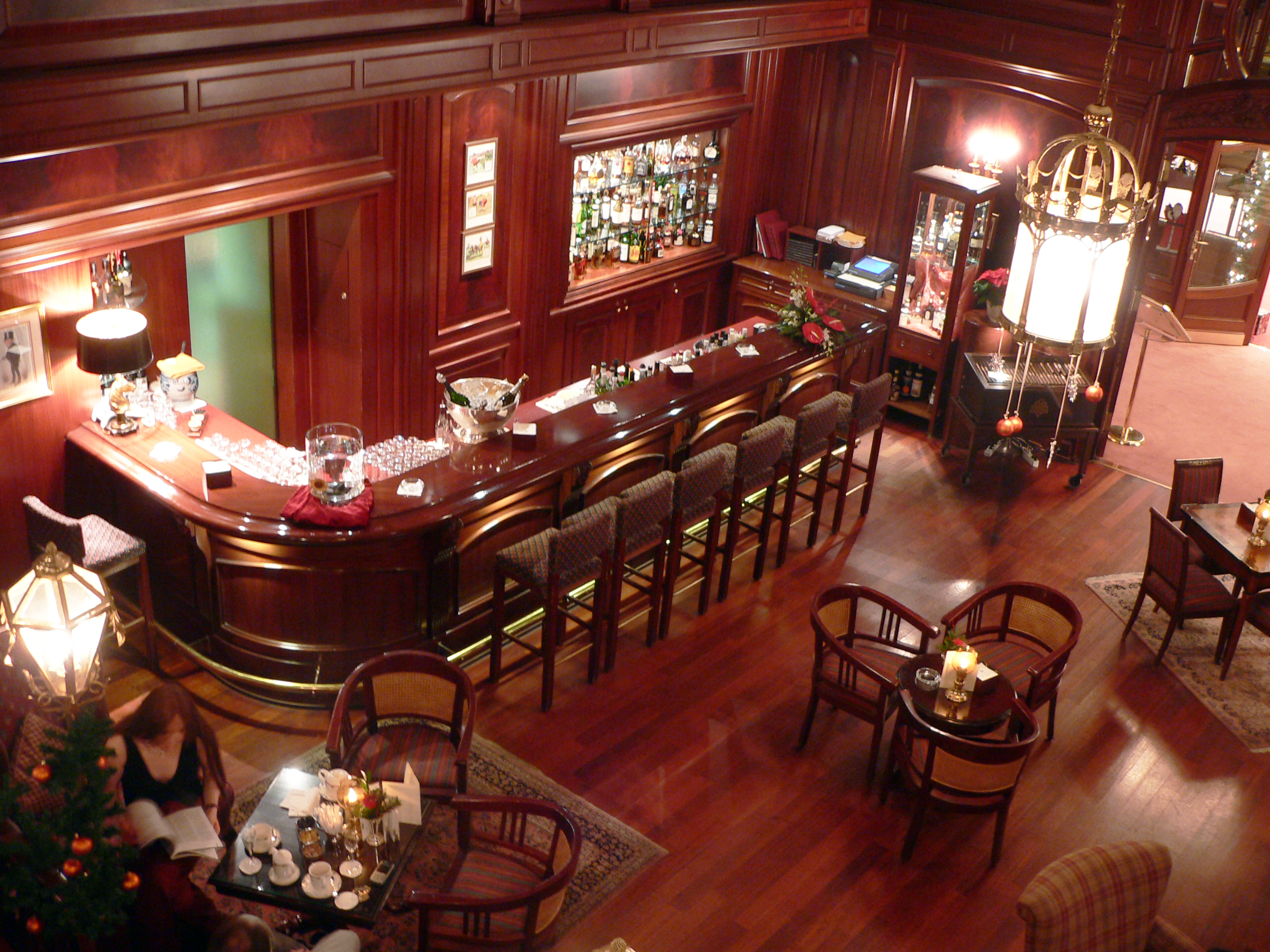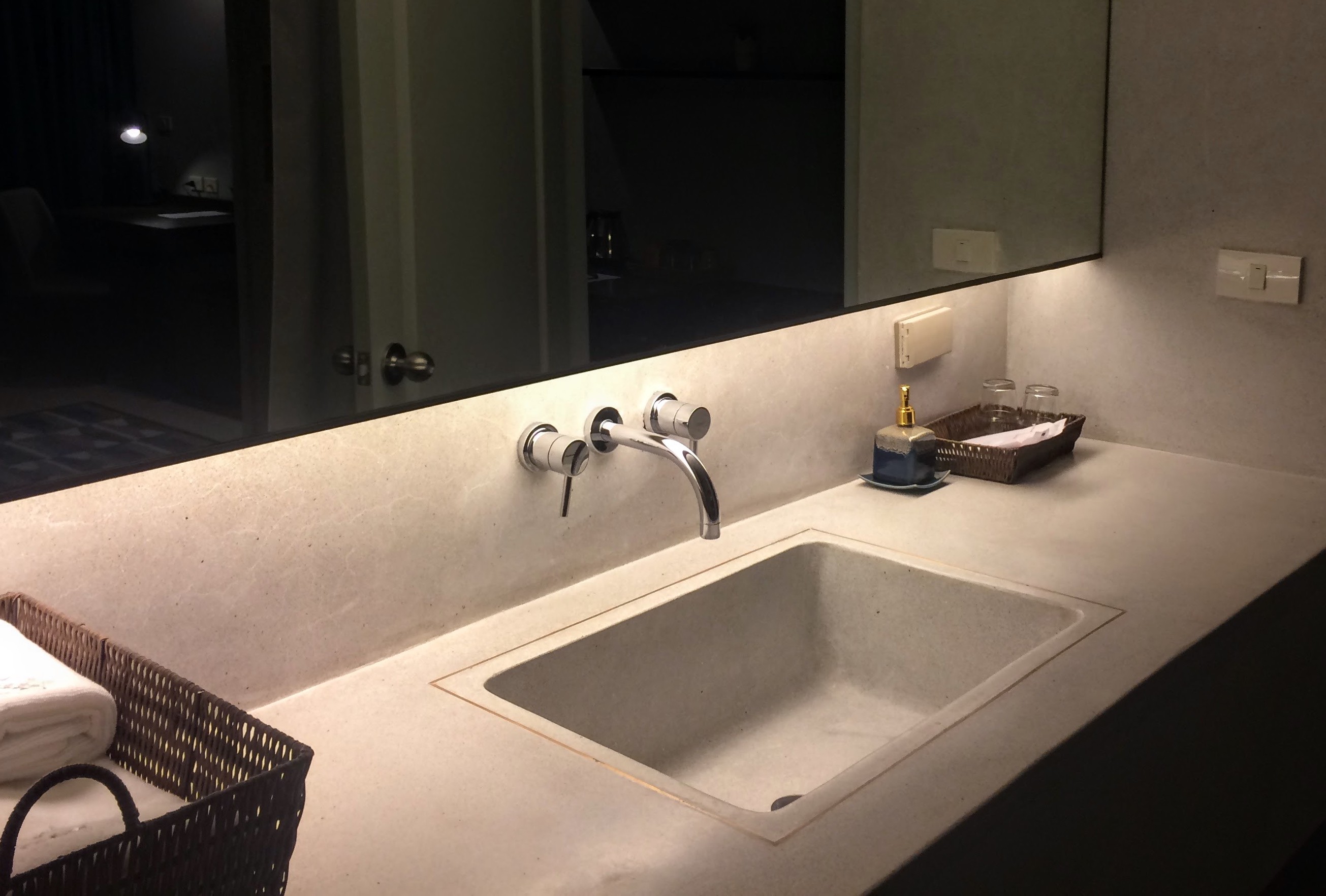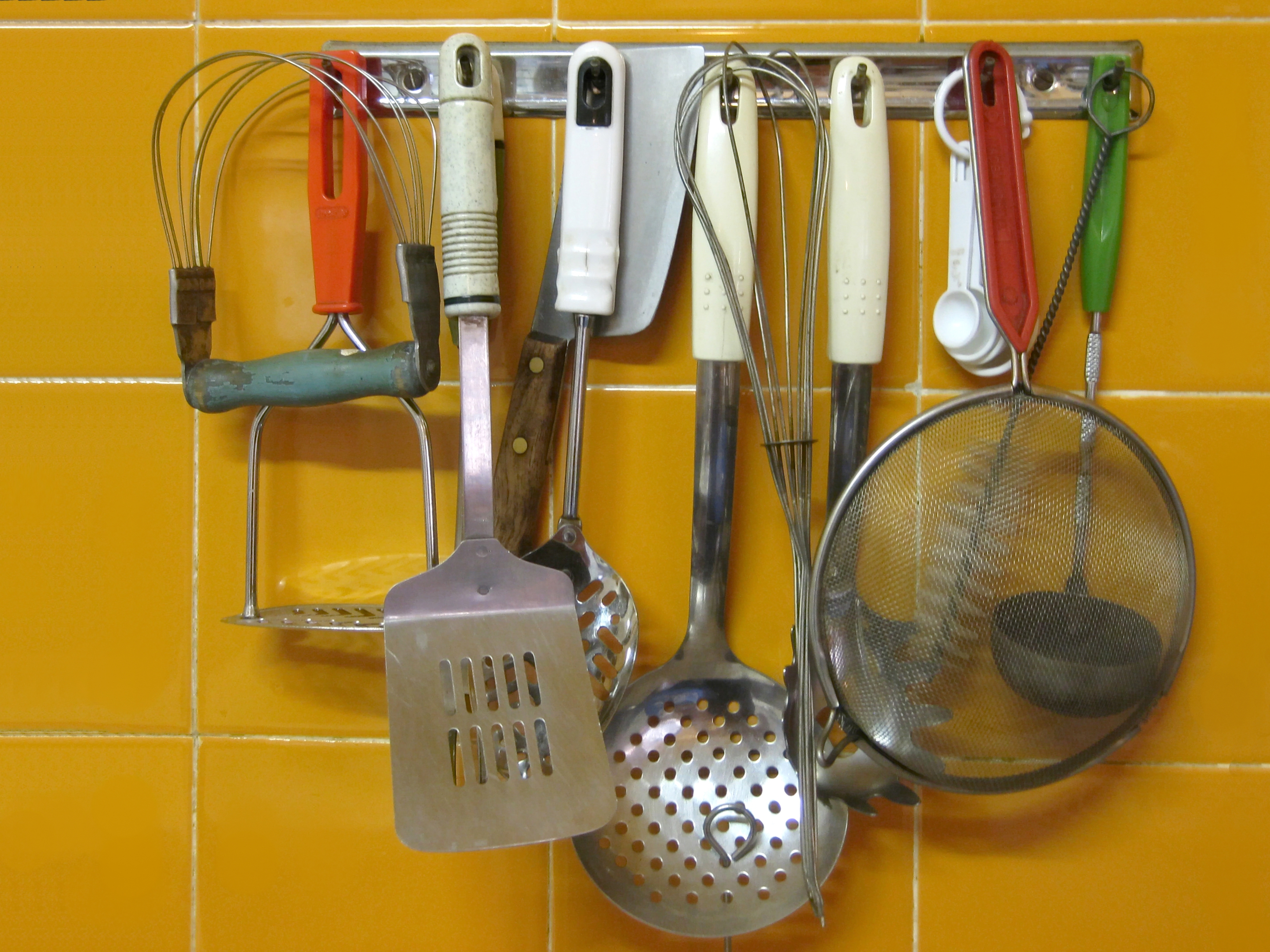|
Wet Bar
A wet bar is a small bar used for mixing and serving alcoholic beverages that includes a sink with running water, as opposed to a "dry bar" that does not include a sink. A wet bar can increase the rate at which drinks are served because of the sink, which allows for glasses to be cleaned immediately. The sink may also be used for cleaning glassware as well as spills that may happen. Wet bars are found in homes for entertainment purposes. Near a kitchen or in a finished basement are some typical locations for a wet bar. Wet bars are relatively simple to build, and, thus, many homeowners have turned the wet bar into a do-it-yourself "Do it yourself" ("DIY") is the method of building, modifying, or repairing things by oneself without the direct aid of professionals or certified experts. Academic research has described DIY as behaviors where "individuals use raw and semi- ... project. References Kitchenware Furniture Kitchen {{architecturalelement-stub ... [...More Info...] [...Related Items...] OR: [Wikipedia] [Google] [Baidu] |
Bar (counter)
A bar, also known as a saloon, a tavern or tippling house, or sometimes as a pub or club, is a retail business that serves alcoholic beverages, such as beer, wine, liquor, cocktails, and other beverages such as mineral water and soft drinks. Bars often also sell snack foods, such as chips (crisps) or peanuts, for consumption on their premises. Some types of bars, such as pubs, may also serve food from a restaurant menu. The term "bar" refers both to the countertop where drinks are prepared and served and also by extension to the entirety of the establishment in which the bar is located. The term derives from the metal or wooden bar (barrier) that is often located along the length of the "bar". Over many years, heights of bars were lowered, and high stools added, and the brass bar remains today. History There have been many different names for public drinking spaces throughout history. In the Thirteen Colonies, a tavern was a meeting place. During the 19th century saloons w ... [...More Info...] [...Related Items...] OR: [Wikipedia] [Google] [Baidu] |
Alcoholic Beverage
Drinks containing alcohol (drug), alcohol are typically divided into three classes—beers, wines, and Distilled beverage, spirits—with alcohol content typically between 3% and 50%. Drinks with less than 0.5% are sometimes considered Non-alcoholic drink, non-alcoholic. Many societies have a distinct drinking culture, where alcoholic drinks are integrated into party, parties. Most countries have Alcohol law, laws regulating the production, sale, and consumption of alcoholic beverages. Some regulations require the labeling of the percentage alcohol content (as ABV or Alcohol proof, proof) and the use of a Alcohol warning label, warning label. List of countries with alcohol prohibition, Some countries Prohibition, ban the consumption of alcoholic drinks, but they are legal in most parts of the world. The temperance movement advocates against the consumption of alcoholic beverages. The global alcohol industry, alcoholic drink industry exceeded $1.5 trillion in 2017. Alcohol is o ... [...More Info...] [...Related Items...] OR: [Wikipedia] [Google] [Baidu] |
Sink
A sink (also known as ''basin'' in the UK) is a bowl-shaped plumbing fixture for washing hands, dishwashing, and other purposes. Sinks have a tap (faucet) that supplies hot and cold water and may include a spray feature to be used for faster rinsing. They also include a drain to remove used water; this drain may itself include a strainer and/or shut-off device and an overflow-prevention device. Sinks may also have an integrated soap dispenser. Many sinks, especially in kitchens, are installed adjacent to or inside a counter. When a sink becomes clogged, a person will often resort to using a chemical drain cleaner or a plunger, though most professional plumbers will remove the clog with a ''drain auger'' (often called a " plumber's snake"). History United States The washstand was a bathroom sink made in the United States in the late 18th century. [...More Info...] [...Related Items...] OR: [Wikipedia] [Google] [Baidu] |
Water
Water is an inorganic compound with the chemical formula . It is a transparent, tasteless, odorless, and Color of water, nearly colorless chemical substance. It is the main constituent of Earth's hydrosphere and the fluids of all known living organisms (in which it acts as a solvent). It is vital for all known forms of life, despite not providing food energy or organic micronutrients. Its chemical formula, , indicates that each of its molecules contains one oxygen and two hydrogen atoms, connected by covalent bonds. The hydrogen atoms are attached to the oxygen atom at an angle of 104.45°. In liquid form, is also called "water" at standard temperature and pressure. Because Earth's environment is relatively close to water's triple point, water exists on Earth as a solid, a liquid, and a gas. It forms precipitation in the form of rain and aerosols in the form of fog. Clouds consist of suspended droplets of water and ice, its solid state. When finely divided, crystalline ice ... [...More Info...] [...Related Items...] OR: [Wikipedia] [Google] [Baidu] |
Popular Mechanics
''Popular Mechanics'' (often abbreviated as ''PM'' or ''PopMech'') is a magazine of popular science and technology, featuring automotive, home, outdoor, electronics, science, do it yourself, and technology topics. Military topics, aviation and transportation of all types, space, tools and gadgets are commonly featured. It was founded in 1902 by Henry Haven Windsor, who was the editor and—as owner of the Popular Mechanics Company—the publisher. For decades, the tagline of the monthly magazine was "Written so you can understand it." In 1958, PM was purchased by the Hearst Corporation, now Hearst Communications. In 2013, the US edition changed from twelve to ten issues per year, and in 2014 the tagline was changed to "How your world works." The magazine added a podcast in recent years, including regular features ''Most Useful Podcast Ever'' and ''How Your World Works''. History ''Popular Mechanics'' was founded as a weekly in Chicago by Henry Haven Windsor, with the first ... [...More Info...] [...Related Items...] OR: [Wikipedia] [Google] [Baidu] |
Do-it-yourself
"Do it yourself" ("DIY") is the method of building, modifying, or repairing things by oneself without the direct aid of professionals or certified experts. Academic research has described DIY as behaviors where "individuals use raw and semi-raw materials and parts to produce, transform, or reconstruct material possessions, including those drawn from the natural environment (e.g., landscaping)". DIY behavior can be triggered by various motivations previously categorized as marketplace motivations (economic benefits, lack of product availability, lack of product quality, need for customization), and identity enhancement ( craftsmanship, empowerment, community seeking, uniqueness). The term "do-it-yourself" has been associated with consumers since at least 1912 primarily in the domain of home improvement and maintenance activities. The phrase "do it yourself" had come into common usage (in standard English) by the 1950s, in reference to the emergence of a trend of people undert ... [...More Info...] [...Related Items...] OR: [Wikipedia] [Google] [Baidu] |
Kitchenware
:'' For a record label, see Kitchenware Records'' Kitchenware refers to the tools, utensils, appliances, dishes, and cookware used in food preparation and the serving of food. Kitchenware can also be used to hold or store food before or after preparation. Types Kitchenware encompasses a wide range of tools. Some of the most common items of kitchenware are: See also * Batterie de cuisine * Cookware and bakeware * Gastronorm, a European size standard for kitchenware * Eurobox, a European size standard for storage and transport * List of cooking vessels * List of eating utensils * List of food preparation utensils * List of glassware * List of Japanese cooking utensils * List of serving utensils * List of types of spoons * NSF International, formerly "National Sanitation Foundation" * Tableware Tableware items are the dishware and utensils used for setting a table, serving food, and dining. The term includes cutlery, glassware, serving dishes, serving ut ... [...More Info...] [...Related Items...] OR: [Wikipedia] [Google] [Baidu] |
Furniture
Furniture refers to objects intended to support various human activities such as seating (e.g., Stool (seat), stools, chairs, and sofas), eating (table (furniture), tables), storing items, working, and sleeping (e.g., beds and hammocks). Furniture is also used to hold objects at a convenient height for work (as horizontal surfaces above the ground, such as tables and desks), or to store things (e.g., cupboards, Shelf (storage), shelves, and drawers). Furniture can be a product of design and can be considered a form of decorative art. In addition to furniture's functional role, it can serve a symbolic or Religion, religious purpose. It can be made from a vast multitude of materials, including metal, plastic, and wood. Furniture can be made using a variety of woodworking joints which often reflects the local culture. People have been using natural objects, such as tree stumps, rocks and moss, as furniture since the beginning of human civilization and continues today in some househol ... [...More Info...] [...Related Items...] OR: [Wikipedia] [Google] [Baidu] |







